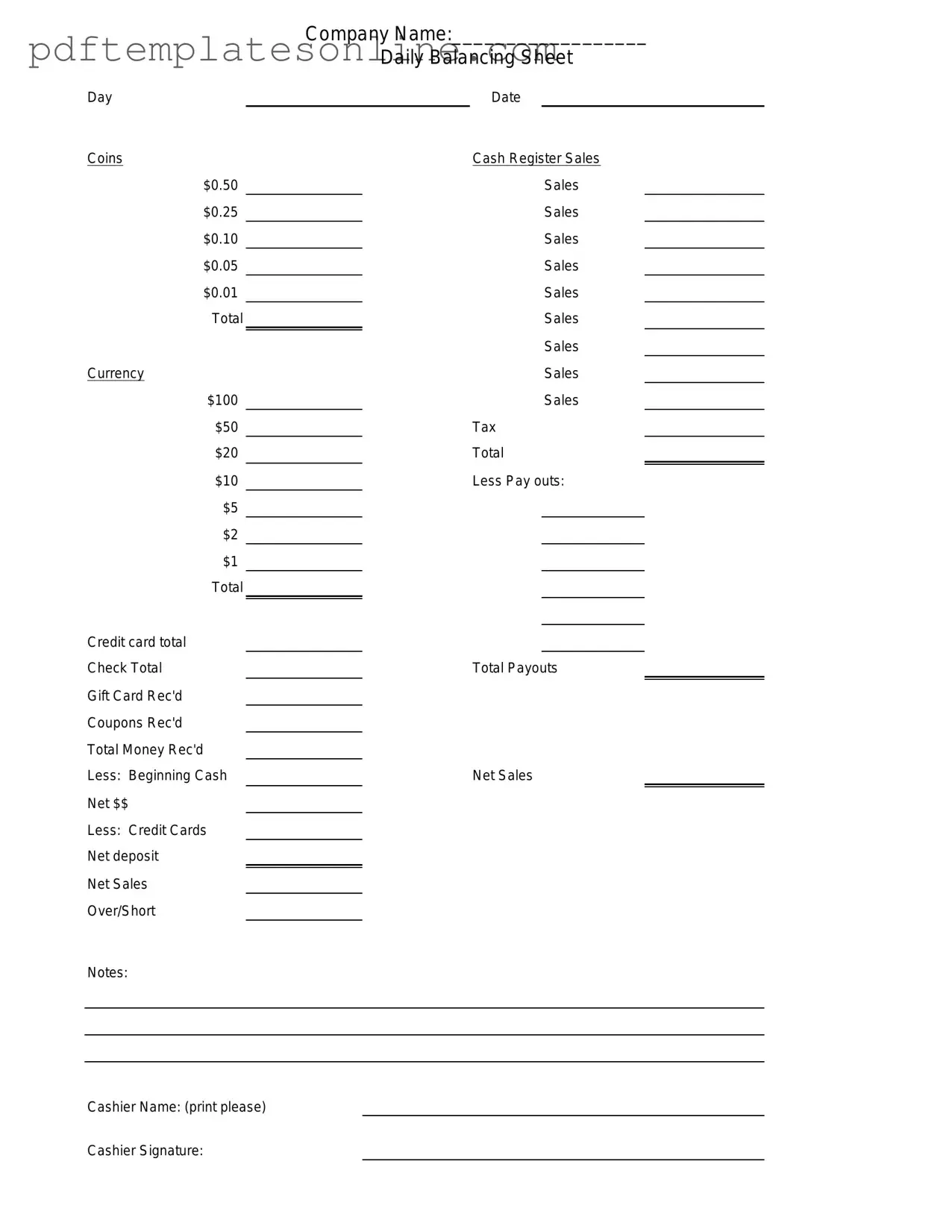When filling out the Cash Drawer Count Sheet form, accuracy is crucial. One common mistake is failing to double-check the cash amounts. Individuals may miscount bills or overlook coins, leading to discrepancies. A simple verification process can prevent these errors.
Another frequent error is neglecting to record all forms of payment. Cash, checks, and credit card transactions should all be documented. Omitting any of these can result in an incomplete financial picture.
Inconsistent notation is also a prevalent issue. Using different formats for writing amounts can create confusion. For example, writing "$100" in one instance and "100" in another may lead to misunderstandings during reconciliation.
People often forget to sign and date the Cash Drawer Count Sheet. This step is essential for accountability. Without a signature, it may be unclear who completed the form, which can complicate audits.
Another mistake is not using the correct version of the form. Sometimes, outdated forms circulate, which can lead to missing information or incorrect calculations. Always ensure the latest version is being used.
Inadequate training can also contribute to errors. If individuals are not familiar with the form or its purpose, they may fill it out incorrectly. Providing clear instructions and training can help mitigate this issue.
Some people overlook the importance of clear handwriting. Illegible writing can cause misunderstandings or errors in data entry. Taking the time to write clearly can save time and effort later on.
Failing to keep a copy of the completed form is another mistake. Retaining a record can be beneficial for future reference or audits. Individuals should consider making a photocopy or scanning the document.
Inconsistent cash handling practices can lead to errors on the form. If individuals do not follow the same procedures for cash management, discrepancies may arise. Establishing standardized practices can help maintain accuracy.
Lastly, not reviewing the completed form before submission can lead to overlooked mistakes. A final check can catch errors that may have been missed during the initial filling out process. Taking a moment to review can enhance overall accuracy.
